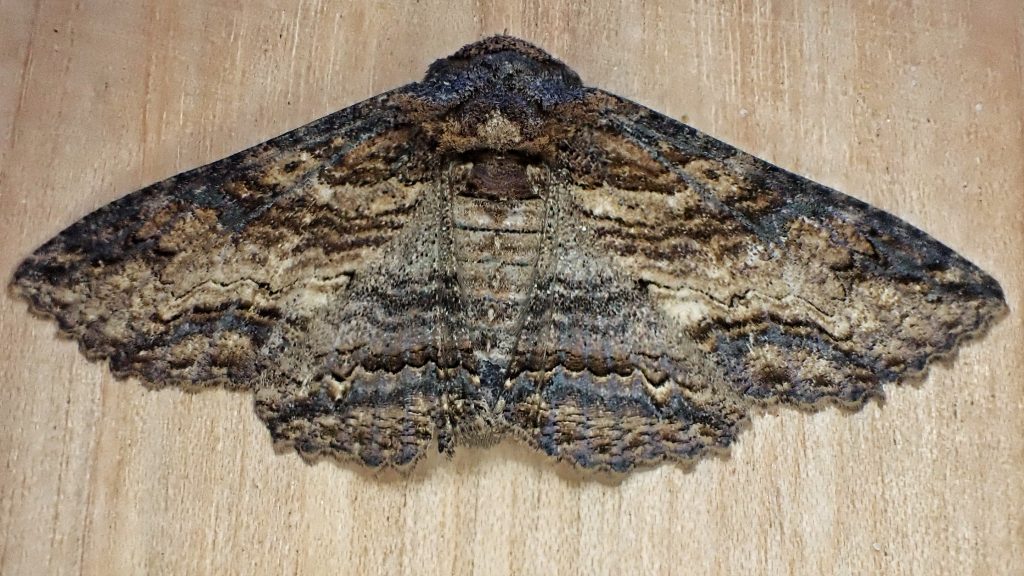
When I was at Mike and Sue’s, in the midst of the charred landscape of the Holiday Farm fire, they allowed me to run lights and see what kinds of bugs showed up. I didn’t have high hopes, surrounded by all of that devastation, especially since it happened in the fall, which I figured would have wiped out that year’s generation of moths. So it was a very pleasant surprise when this Zale lunata showed up right after dark. Altogether I had around 40 moths total (including 3 Lunate Zales), of at least a dozen species, as well as some soldier beetles, caddisflies, and crane flies.
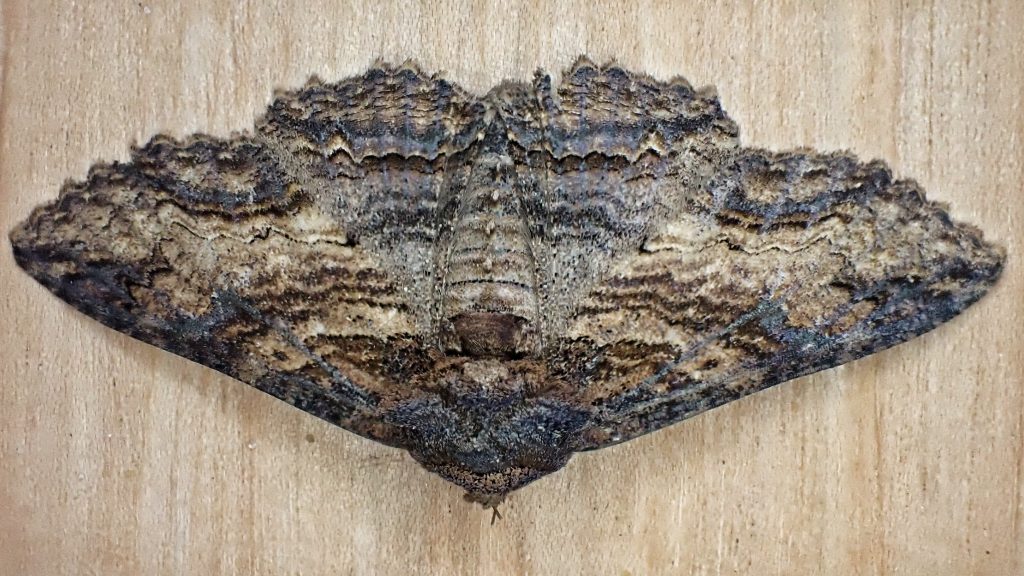
There are patches of unburned and lightly burned vegetation that are visible from Mike and Sue’s, but they are few and far between. My guess is that most of the insects had emigrated from those patches, but it’s possible that some of them that pupate in the soil, like these Zale lunata, managed to survive the fire that raged above their shelter. And the generalists among them, again like the Lunate Zales, probably managed to find some acceptable host plants that had either regenerated or recolonized, and were thus able to reproduce.
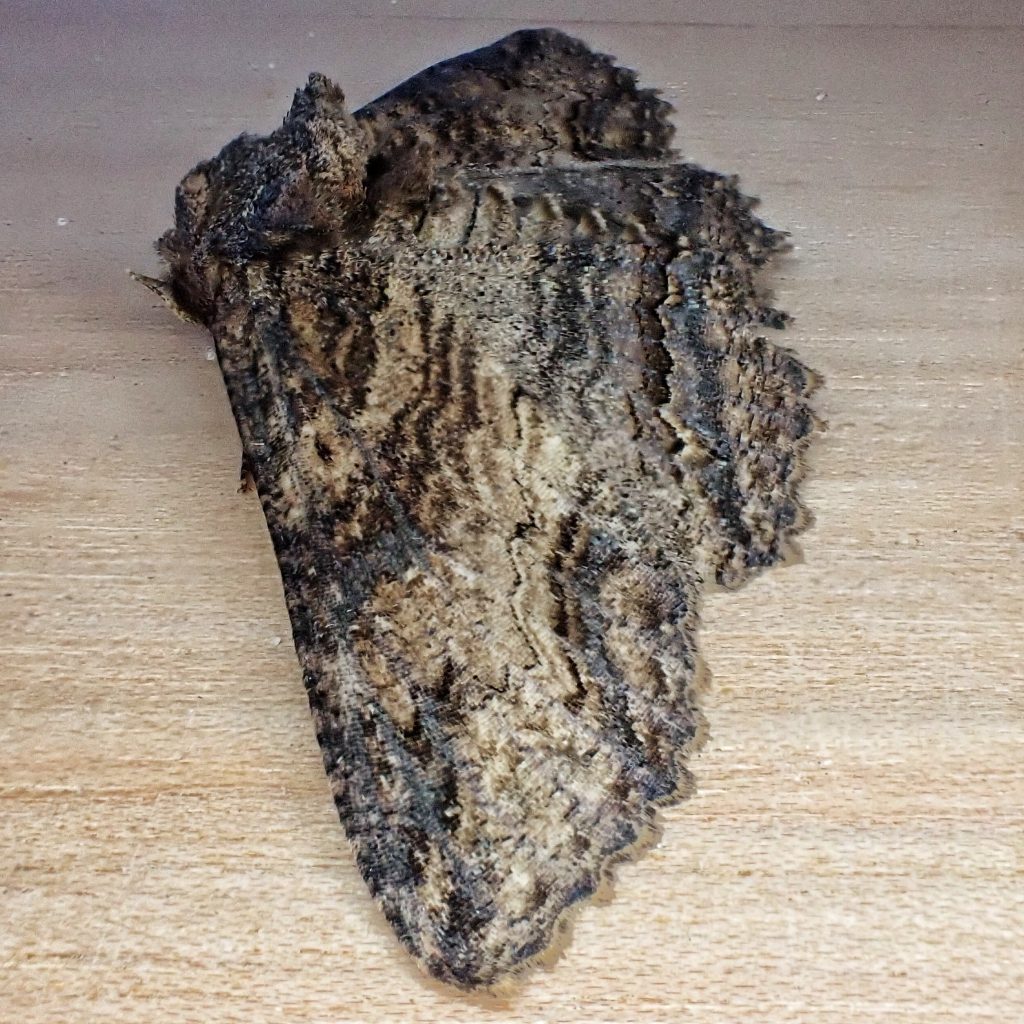
The Zales look like they should belong to the family Geometridae, but they are actually Erebids, a very diverse family which also includes the underwings, tiger moths (like Arctia caja), and snout moths (like Hypena decorata). Although they perch with wings flat like a Geometer, one look at the ‘hairdo’ on the thorax will convince you that this is no geometrid.
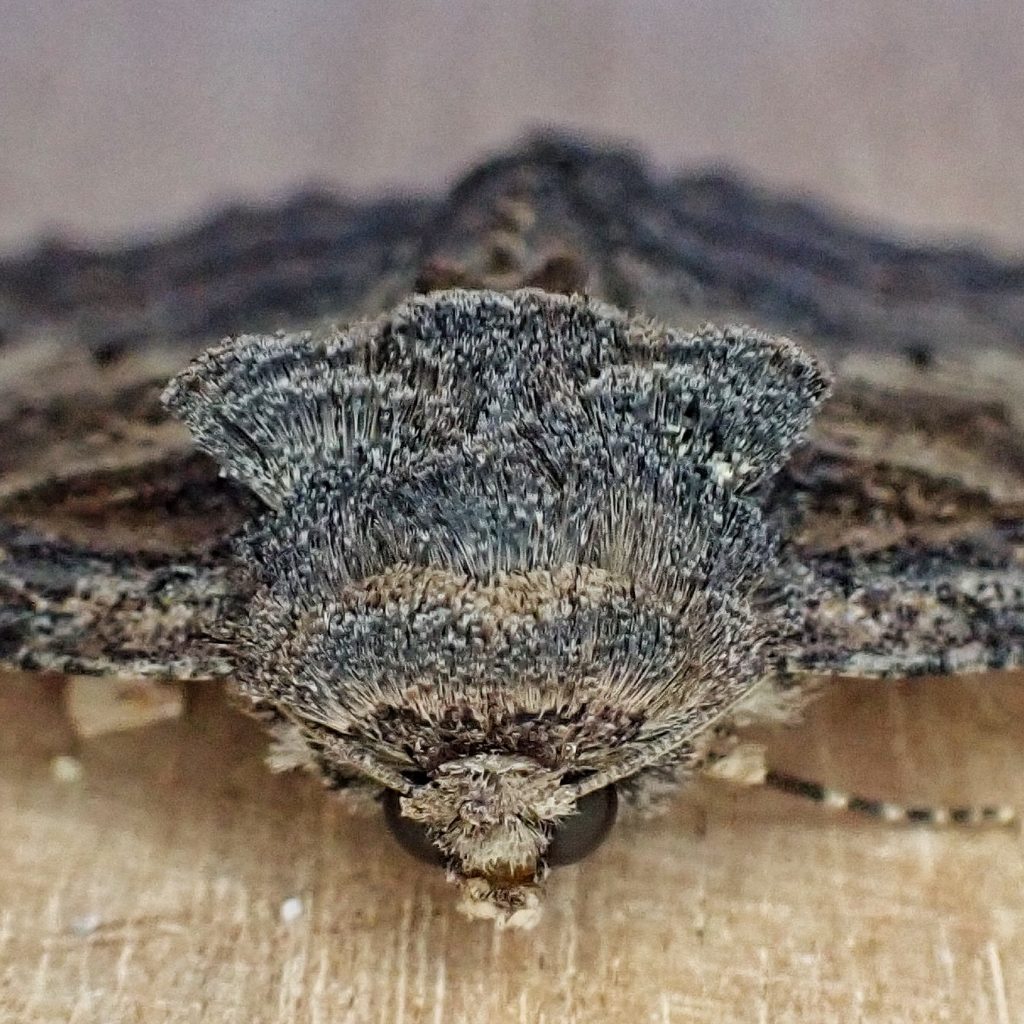
Description-This is the largest Zale in our region (fw length 21-25mm); fore- and hindwings are both brownish, with many parallel, scalloped lines; highly variable in color, with varying patches of white, light gray, and yellow brown; may have light colored, crescent shaped patches near the terminal line; postmedial line has a distinct bilobed dip 1/2 way to the costa; thorax has sculptured tufts; margins of all wings are scalloped.
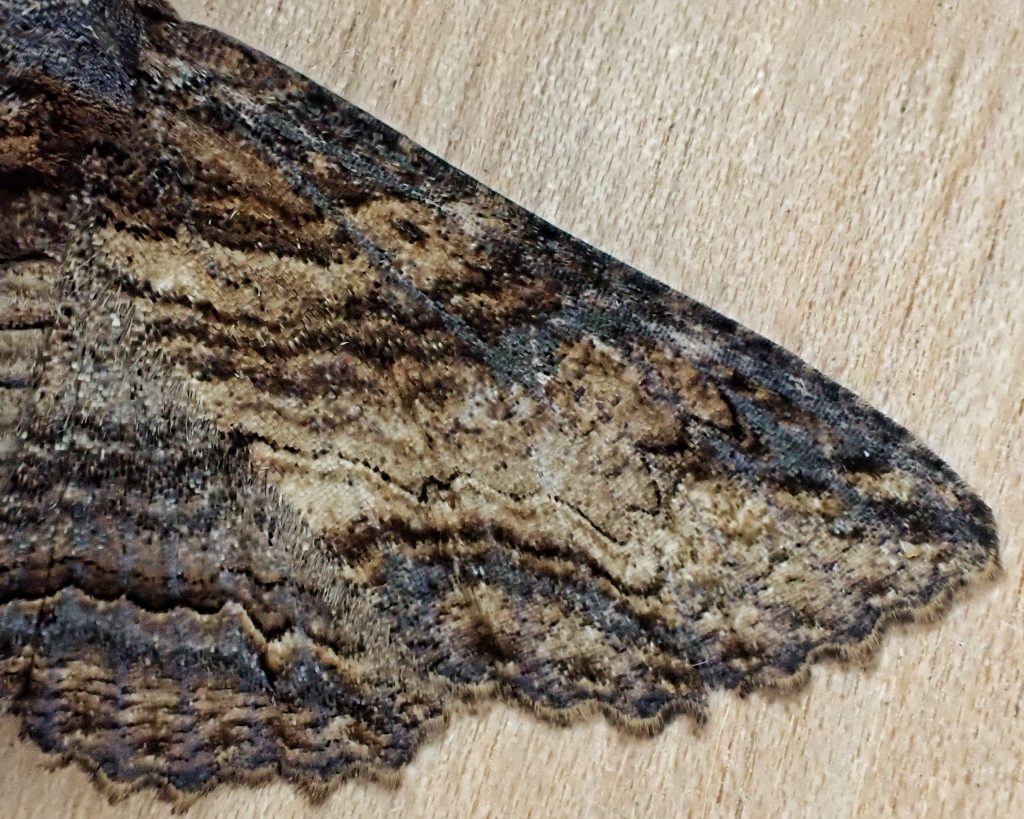
Similar species–Zale minerea has a convex rather than bilobed dip in the postmedial line, and is smaller; Zale rubi has a jagged subterminal line, and is smaller; Triphosa haesitata, T. californiata, and Coryphista meadii are Geometers and do not have a sculptured thorax.
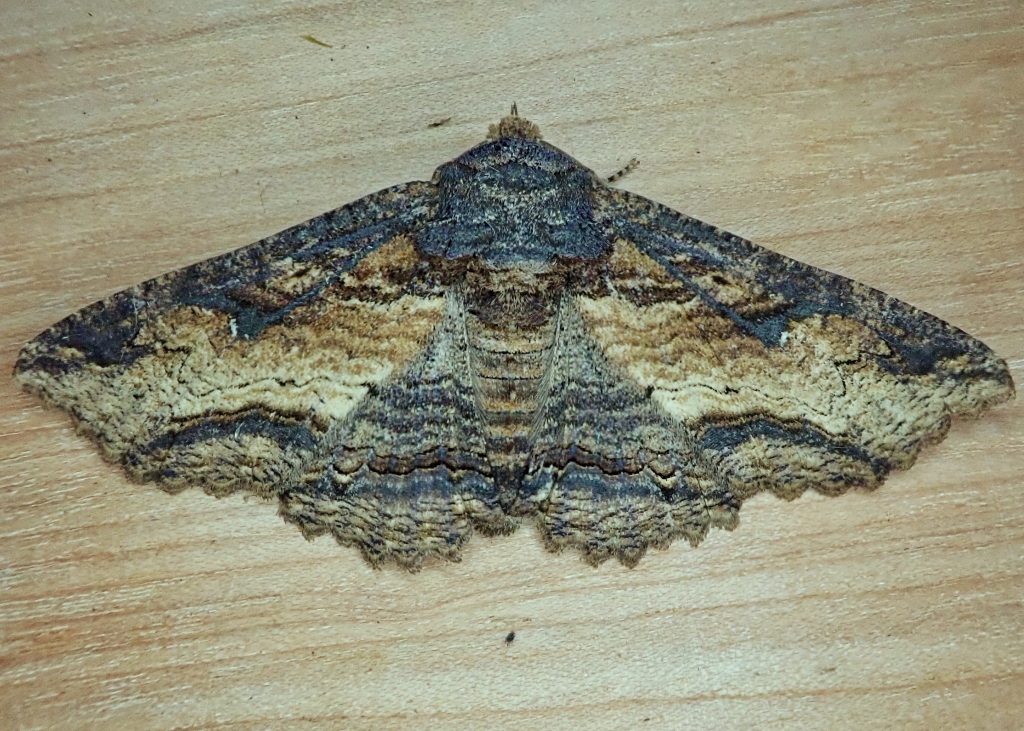
Habitat-Moist to mesic mixed forests and woodlands, and riparian corridors, up to mid elevations.
Range-North America; region wide in appropriate habitat.
Eats-Larvae are generalists, and feed on members of the Rose, Birch, Willow, and Maple families, amongst others.
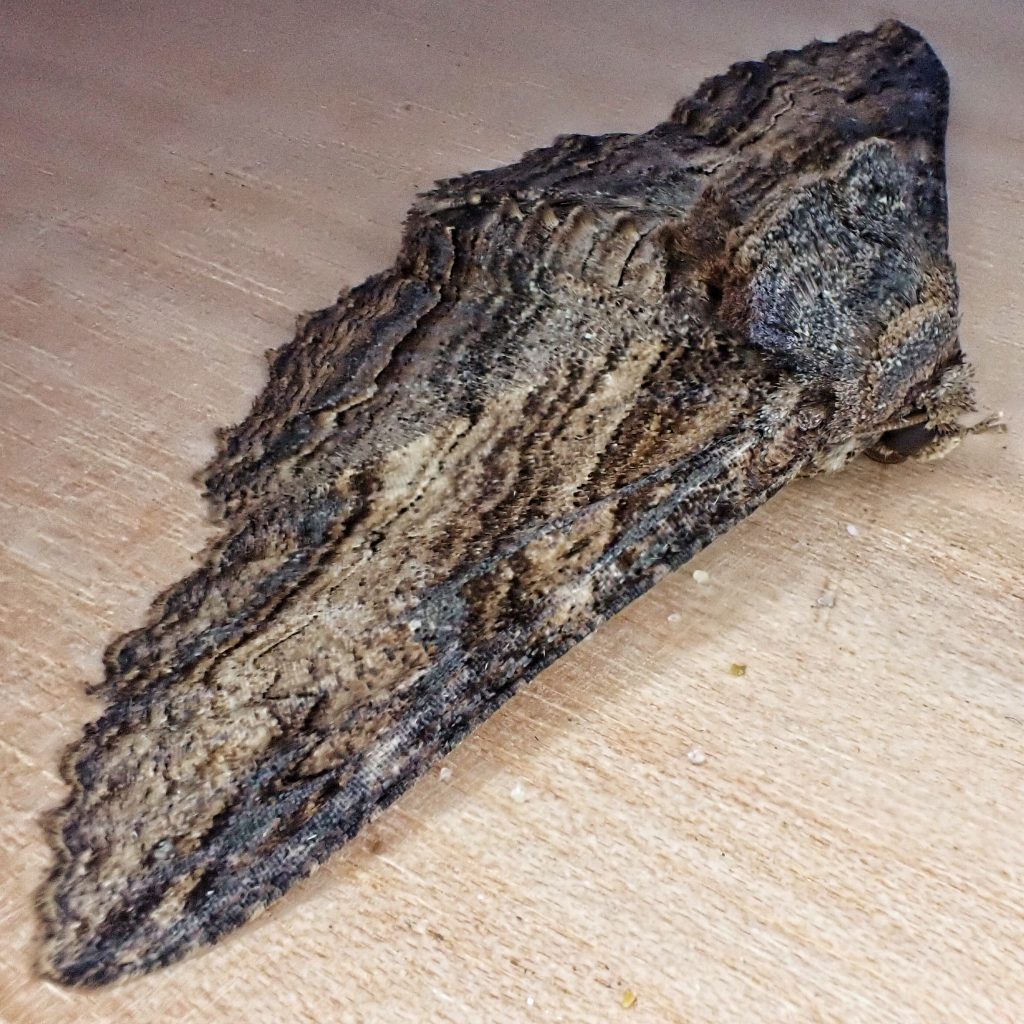
Reproduction– May be uni- or bivoltine, depending on conditions; larvae overwinter as pupae.
Adults active-March through October, but most common April to June.
Etymology of names–Zale is probably from the Greek for squall/storm/ surging sea, but I can’t find any proof of that, or what it may reference. The specific epithet lunata is from the Latin for moon, and probably references the crescent shapes on the wings, although many specimens don’t have them.
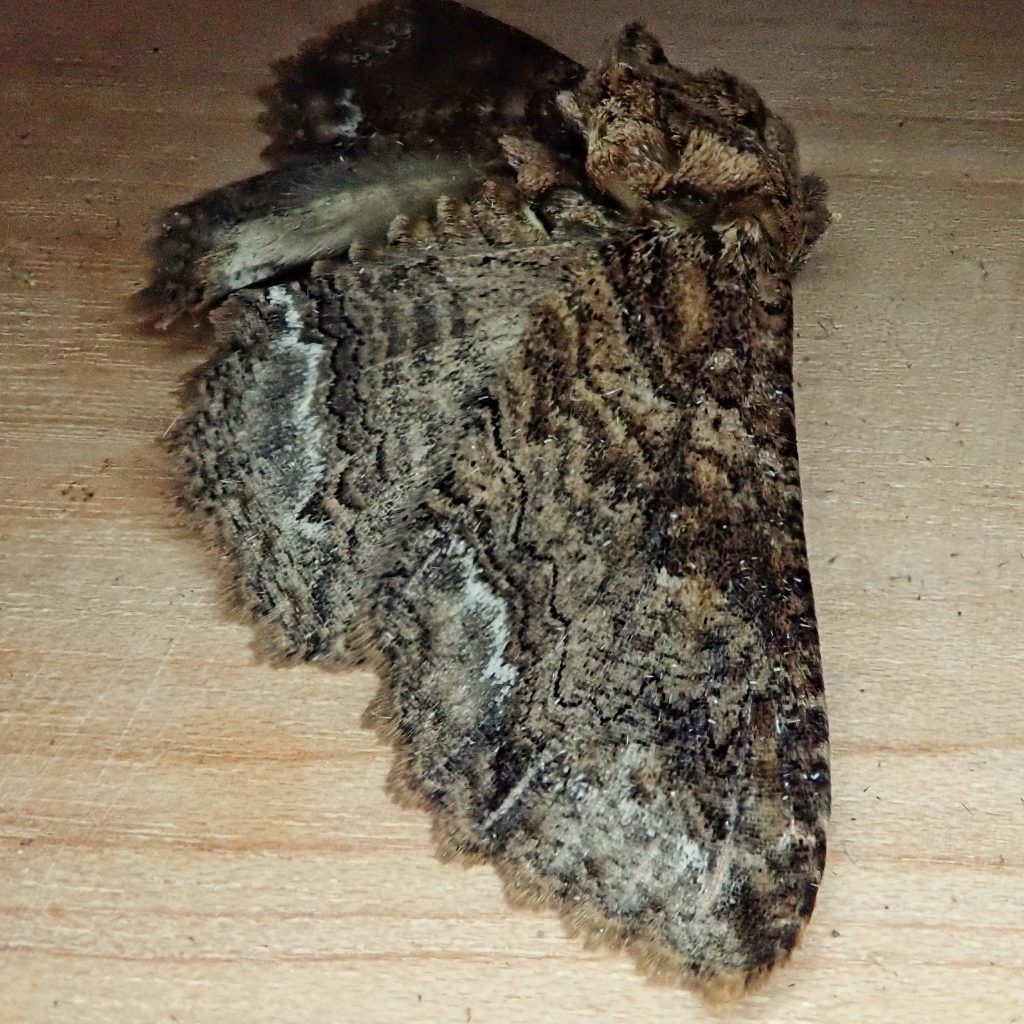
https://bugguide.net/node/view/4197
http://mothphotographersgroup.msstate.edu/species.php?hodges=8689
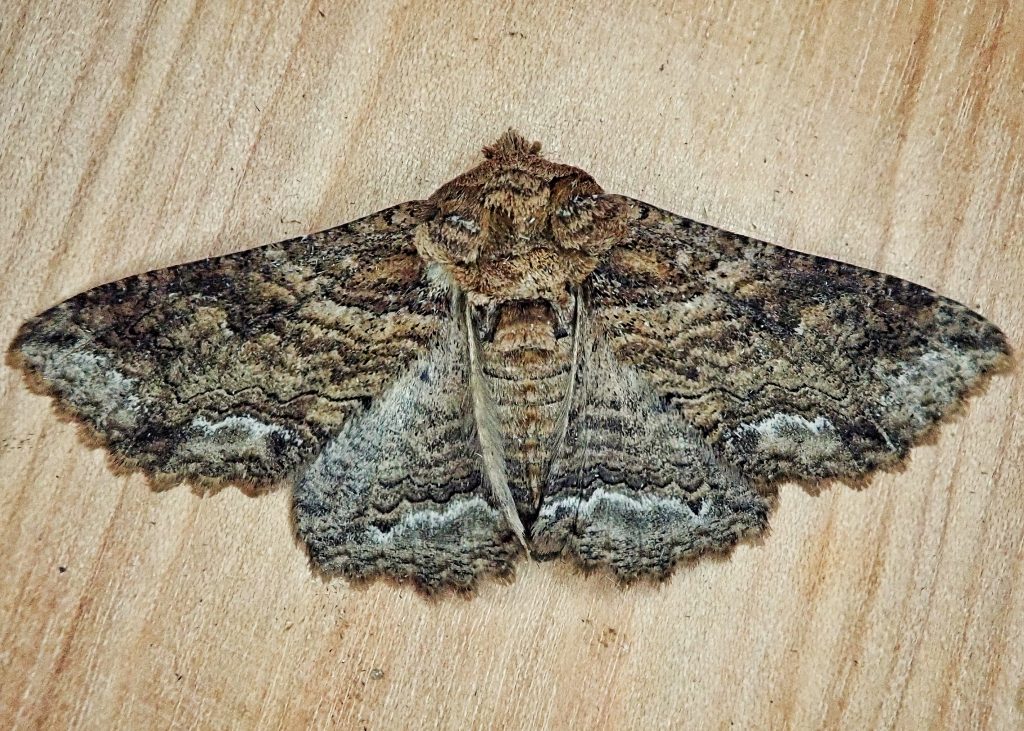
Dan, I really, really enjoy your posts. I learn so much and look at the photos again and again. Thank you for your wonderful, important work.
Thank you so much for your appreciation!
This is practically my favorite moth species! What a story you have written and I love that “hairdo” closeup. Many thanks for your wonderful work.
Thank you, Marnie!